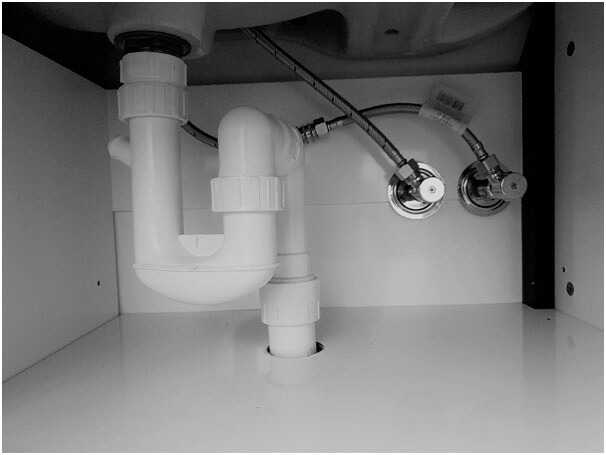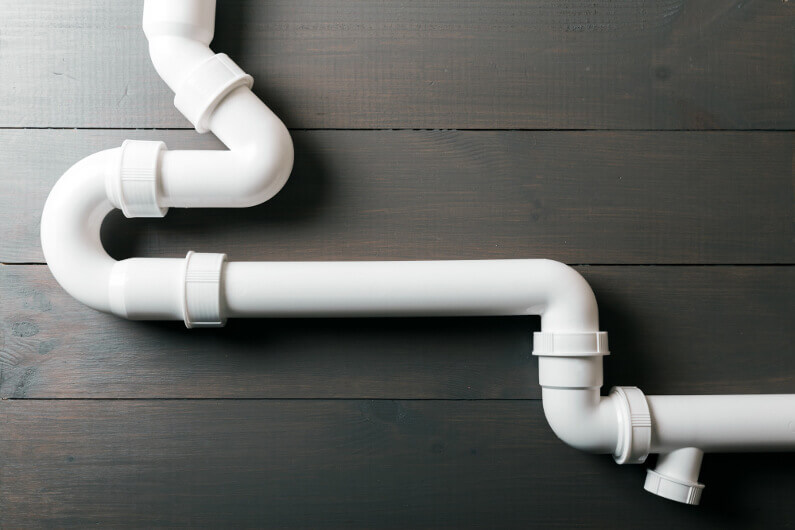How Proper Ventilation in Plumbing Systems
How Proper Ventilation in Plumbing Systems
Blog Article
Just about everyone has got their private way of thinking when it comes to The Upsides of Proper Ventilation in Plumbing Design.

Proper ventilation in pipes systems is commonly forgotten, yet it is essential for maintaining the capability and safety of your home's plumbing. Air flow aids manage air pressure, protect against the build-up of hazardous gases, and guarantee the effective removal of waste. In this guide, we will certainly explore the relevance of correct plumbing air flow, exactly how it functions, and the advantages it brings to your pipes system.
Understanding Air Flow in Pipes
Air flow in pipes describes the network of pipes that enable air to stream with the drainage system. These vents serve multiple functions, consisting of managing atmospheric pressure within the pipelines, preventing drain gases from going into the home, and helping in the smooth circulation of wastewater.
Exactly How Ventilation Works in Plumbing Solutions
Atmospheric Pressure Guideline
Correct air flow keeps well balanced air pressure within the plumbing system. When water flows with pipes, it displaces air. Without ample air flow, this displacement can create adverse pressure, bring about reduce drains pipes or siphoning of water from traps, which can trigger unpleasant smells to leak into the home.
Stopping Sewer Gas Build-up
One of one of the most critical functions of pipes vents is to avoid sewer gases, such as methane and hydrogen sulfide, from collecting within the home. These gases can posture significant health dangers and are highly combustible. Vent pipelines permit these gases to run away securely outdoors.
Helping in Waste Removal
Air flow helps in the effective elimination of wastewater by stopping airlocks in the water drainage system. When air can move openly with the vents, it enables water and waste to move smoothly with the pipes, minimizing the risk of clogs and back-ups.
Kinds Of Plumbing Vents
Key Stack Vent
The main pile vent, additionally known as the vent stack, is the main air vent in a plumbing system. It extends from the primary drain line up via the roof covering, permitting gases to escape and fresh air to get in the system.
Branch Vent
Branch vents link to the main stack vent and serve individual components, such as sinks, commodes, and showers. These vents ensure that each component has sufficient air flow to function effectively.
Air Admission Valve (AAV).
An Air Admittance Valve (AAV) is a one-way shutoff that allows air to enter the plumbing system without the need for a traditional air vent pipe extending through the roof covering. AAVs are commonly utilized in restorations or areas where installing a basic air vent is not practical.
Signs of Poor Air Flow in Pipes.
Slow Draining Fixtures.
If your sinks, tubs, or toilets are draining gradually, maybe an indication of inadequate air flow. Insufficient air circulation can develop a vacuum result, making it hard for water to drain pipes effectively.
Gurgling Seems.
Gurgling sounds coming from drains pipes are frequently an outcome of air being drawn through water traps due to negative pressure in the pipes. This is a clear indicator of insufficient air flow.
Unpleasant Smells.
Sewage system odors inside your home are a red flag that your pipes system is not effectively ventilated. This can indicate that sewer gases are not being properly aired vent outside, leading to possibly harmful problems.
Common Air Flow Blunders.
Poor Vent Sizing.
Making use of undersized air vent pipes can bring about poor air flow and pressure inequalities in the system. It's essential to use vents that fulfill the details demands of your plumbing system.
Improper Vent Placement.
Putting vents too far from the components they offer can decrease their efficiency. Proper placement guarantees that air can move easily and efficiently via the system.
Ignoring Code Needs.
Building regulations supply specific standards for pipes air flow. Neglecting these codes can cause a system that falls short to operate properly and might cause pricey fixings or health hazards.
Advantages of Appropriate Air Flow.
Enhanced System Efficiency.
Correctly ventilated pipes systems operate much more efficiently, with fewer clogs, faster draining pipes, and less stress on the pipes. This efficiency expands the life expectancy of the plumbing system.
Improved Air High Quality.
By avoiding drain gases from entering your home, correct ventilation contributes to far better indoor air quality, making your living atmosphere healthier and extra comfortable.
Avoiding Water Damage.
Ample air flow aids stop water from being siphoned out of catches, which can lead to sewer gases getting in the home and creating water damage over time.
Steps to Make Certain Appropriate Ventilation.
Consulting Pipes Codes.
Always speak with regional plumbing codes when developing or customizing your pipes system. These codes offer the necessary standards for appropriate airing vent and ensure your system fulfills security requirements.
Normal Examination and Upkeep.
Normal assessments can help recognize possible air flow issues prior to they come to be major troubles. Maintenance tasks, such as cleaning vent pipes and looking for blockages, are vital for keeping the system in good working order.
Professional Setup.
For brand-new installments or major modifications, it's important to employ a specialist plumber. They have the proficiency to ensure the ventilation system is properly made and mounted according to code.
Verdict.
Proper ventilation is a crucial part of any kind of pipes system, making sure that it operates efficiently and securely. By understanding the importance of air flow, recognizing the signs of inadequate ventilation, and taking actions to maintain your system, you can avoid costly problems and safeguard your home's air quality.
Understanding the Role of Your Plumbing Vents in the Drainage System
The plumbing system in your home is more than just the kitchen sink, toilet, and bathroom. Some problems that arise within home plumbing are hard to detect because homeowners may not understand potential causes.
One part of the plumbing system that could cause you endless problems is the venting. The drain lines that run through your home and drain wastewater need proper venting to function properly. Faulty plumbing vents can lead to several problems that require the expertise of a plumber to check them out. Before finding experienced plumbing services, there are a few things to learn about plumbing vents.
Why vents are vital
Vents in the plumbing system lead to an outside area such as the roof or the back. The function of these vents is to keep sewer gases away from the drain pipes. They also establish seals in the drainage pipes that prevent the sucking back of waste gases into the home. Venting in the plumbing system also allows oxygen to get into the drainage system, which is an essential component in the breakdown of waste matter. The vents also ensure that the air pressure within the drainage system remains balanced, facilitating the flow of wastewater.
Possible problems
When the plumbing vents are problematic, one of the consequences is imbalanced water levels in the toilet. If you notice that the levels in the toilet bowl rise and fall all the time, then there may be something wrong with the vents.
Another issue is air bubble formation within the toilet. In most cases like these, the drain pipes are not receiving enough air. Lack of air pressure equalization is what leads to water flow problems. If you come across such issues in your home, make sure you call professional plumbers, such as the ones from Perfection Plumbing & Drain Cleaning Ltd.
Potential causes
Several scenarios can lead to some of the plumbing problems that homeowners suffer because of venting. One such scenario is the use of incorrectly sized vents. Usually, vents are the same size as the drain line to facilitate proper venting. Vents that are too small will lead to some plumbing issues. Another potential cause is fixtures that are not close enough to the vents. In this scenario, air forces itself through the traps of other fixtures, leading to gurgling sounds from toilets and sinks.
Most of these problems also happen with clogged vents. Tree leaves and debris can cause clogging when they make their way down a vent. Unclogging plumbing vents is a service that you can entrust to Saskatoon plumbers. They will know how to snake down vents and remove clogging stuck in fixtures.

I came across that review on Why Plumbing Air Vents Are Important while doing a search on the web. Appreciated our piece? Please share it. Help other people find it. We recognize the value of reading our article about What Is a Plumbing Vent and Why Is It Important.
At This Website Report this page